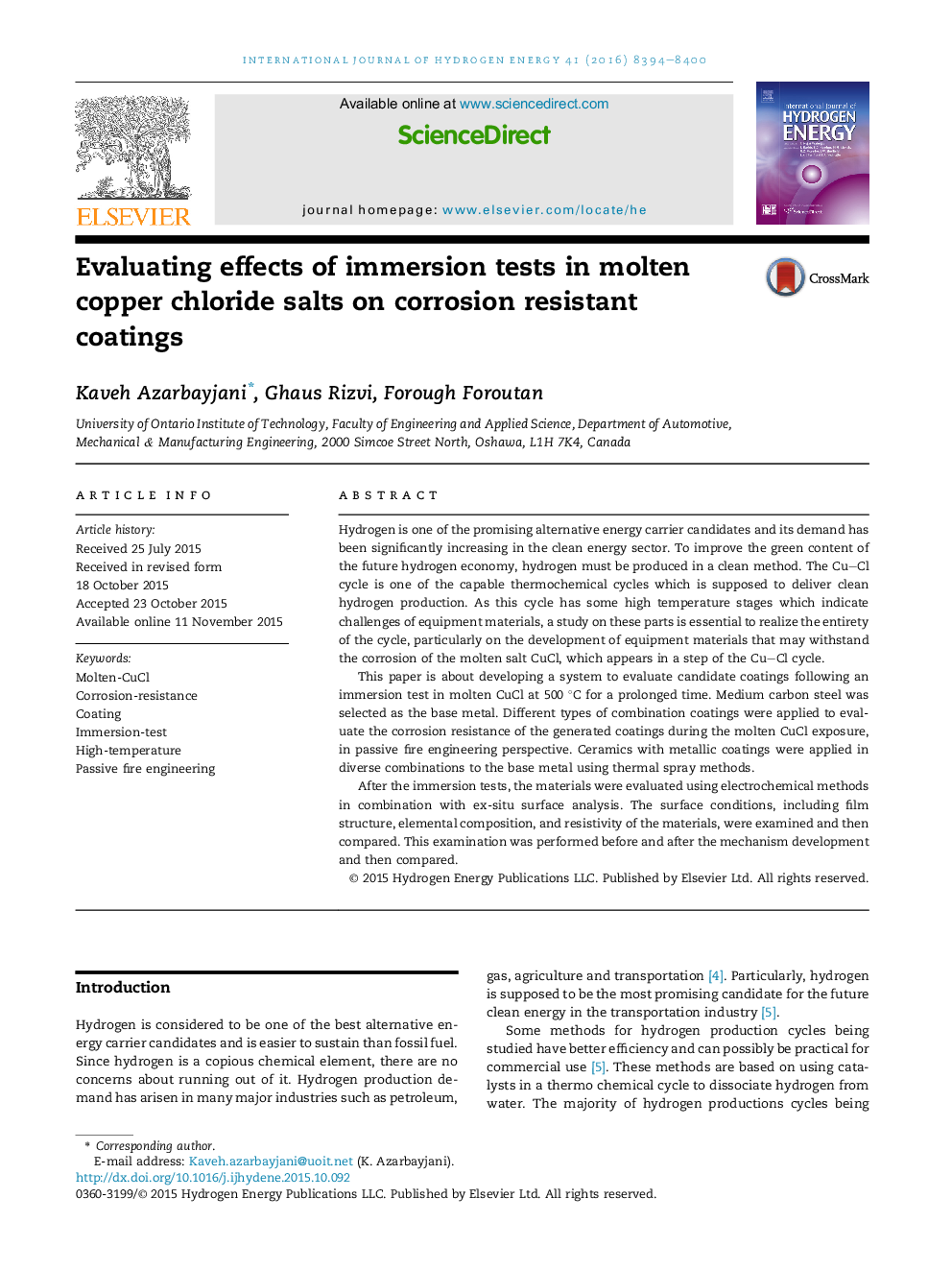| Article ID | Journal | Published Year | Pages | File Type |
|---|---|---|---|---|
| 1277335 | International Journal of Hydrogen Energy | 2016 | 7 Pages |
•Developing a system to evaluate candidate coatings following an immersion test in molten CuCl at 500 °C for a prolonged time.•The materials were evaluated using electrochemical methods in combination with ex-situ surface analysis.•The development of functional coatings for improving the stability and performance of the coatings has been considered.•Despite corrosion and erosion within YSZ coating layers, it got survived during the immersion tests.
Hydrogen is one of the promising alternative energy carrier candidates and its demand has been significantly increasing in the clean energy sector. To improve the green content of the future hydrogen economy, hydrogen must be produced in a clean method. The Cu–Cl cycle is one of the capable thermochemical cycles which is supposed to deliver clean hydrogen production. As this cycle has some high temperature stages which indicate challenges of equipment materials, a study on these parts is essential to realize the entirety of the cycle, particularly on the development of equipment materials that may withstand the corrosion of the molten salt CuCl, which appears in a step of the Cu–Cl cycle.This paper is about developing a system to evaluate candidate coatings following an immersion test in molten CuCl at 500 °C for a prolonged time. Medium carbon steel was selected as the base metal. Different types of combination coatings were applied to evaluate the corrosion resistance of the generated coatings during the molten CuCl exposure, in passive fire engineering perspective. Ceramics with metallic coatings were applied in diverse combinations to the base metal using thermal spray methods.After the immersion tests, the materials were evaluated using electrochemical methods in combination with ex-situ surface analysis. The surface conditions, including film structure, elemental composition, and resistivity of the materials, were examined and then compared. This examination was performed before and after the mechanism development and then compared.
